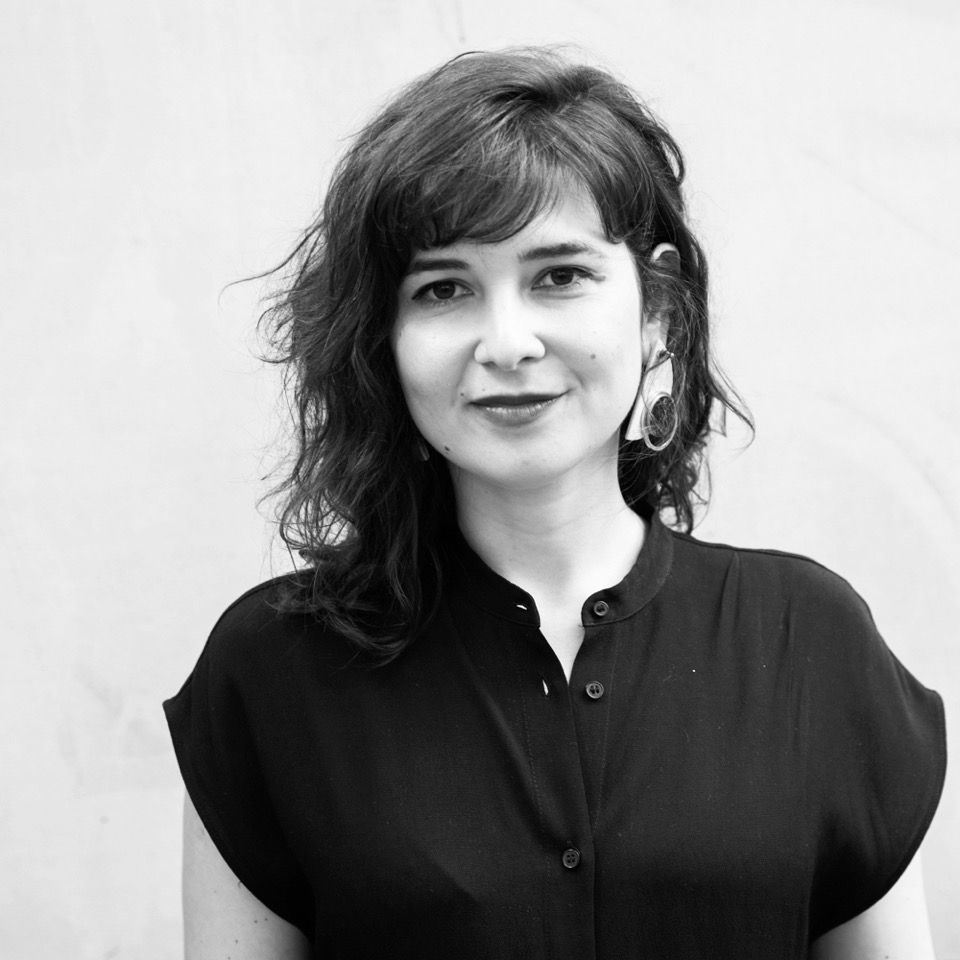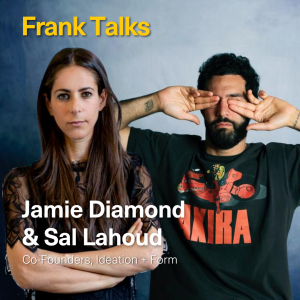Iara Pimenta is an independent curator and writer interested in connections between art and architecture. Her projects investigate relationships between places, history, and culture, and reflect on perspectives that question collective memories and imaginaries. Iara has studied Architecture at the University of São Paulo and holds a master’s degree in Critical and Curatorial Practices from Columbia University GSAPP. With years of experience in elaborating and planning exhibitions and public programs, Iara has worked in art organizations and galleries in São Paulo and New York.
What was your first job in the Arts?
In my last year in college, I started working at Galeria Nara Roesler in São Paulo. I was mostly involved with communications and had different responsibilities including creating presentations about artists and exhibitions, portfolios, and content for the website and social media, among others. It was an incredible opportunity to learn more about the works of the artists they represented as well as about the art world in general.
What was the most useful or important thing you learned at that job?
To research not only what the artists were creating but also the exhibitions in which they were presented and the topics of these shows. I started to follow more closely exhibitions in Brazil and abroad and to be interested in curatorial projects, especially in contemporary art.
Tell us a little more about yourself. When did you realize you wanted to pursue a career in this industry?
I realized I wanted to work with art in college. I studied architecture at the School of Architecture and Urbanism of the University of São Paulo, a school with an interdisciplinary program. Besides learning about all the areas of architecture and urban planning, I also had courses in art history, design of products, and graphic design. It was an intensive program and one that broadened my understanding of the built environment. I really wanted to attend this school because it also offered art history courses. Also, I was able to attend courses in other schools in the University, including in its Museum of Contemporary Art (MAC USP). I knew I had an interest in art history, so I thought it would be an interesting experience to bring these areas together. It is funny to look back and realize that this instinct took me to focus my work on the intersection of art and architecture.
I worked with different areas around exhibitions: exhibition design, communications, production, and finally curating. My path was not linear, but I really wanted to experiment and learn more about all these practices around exhibition/event-making. I feel these helped me to understand the various agents, processes, and steps involved in putting together an exhibition from an initial idea to the de-install.
What do you do now?
I am an independent curator and writer. Independently, I have been doing some research and developing curatorial projects for exhibitions to take place in New York.
I am also a Curator-in-Residency at Kunstraum, an artist-hub and gallery located in Brooklyn. I have recently curated the 2020 Members Show called “Places Within Ourselves.” In addition to that, I collaborate with other curators to facilitate their shows at the organization and to organize public programs. We have been presenting interviews with the artists presented in the shows and online meetings with studio members at Kunstraum, which has been a great way for the artists to show their work and exchange ideas. It has been a great experience for me.
Where are you from?
I am from Brazil. I was born in Ribeirão Preto, a city in the state of São Paulo.
What is the arts community like there?
Brazil has a prolific arts community with incredible artists discussing urgent themes in contemporary art, including issues of history, identity, and social injustices. Brazilian art is diverse yet it has historically been greatly conceptual and socially engaged.
São Paulo has a robust art system with museums, arts organizations, schools, fairs, and more. It has been an economic force for decades, so this also reflects in the art world. Besides, I feel that more and more, the Brazilian art world is interested in other places within the country, looking at artists and works from other contexts.
The art scene in São Paulo is not as wealthy as in New York and the whole infrastructure is smaller, but there are many and incredible exhibitions with poignant research and discussions on social, political, and cultural issues. Brazil is a country with a complex and complicated history, and many artists and curators are invested in reviewing it, proposing difficult conversations in regards to slavery, the military dictatorship as well as recent problems with our ecological system and political scenario, just to name a few. When thinking about this, as one of Paulo Bruscky’s works says “Arte é a última esperança” (“Art Is Our Last Hope”).
Has where you come from shaped what you do in the arts today?
Absolutely. I am very interested in relationships between history and territorial transformations, and how artworks propose new perspectives questioning collective memories and imaginaries. These interests are connected to current discussions in Brazil and the country’s history.
What is the best piece of advice you can give about working in the art world?
To be curious and open to themes you might know little about. Also, to combine research and practice as part of a routine, understanding that building a career is everyday work.
What is one of your greatest accomplishments in your career so far?
I am happy to have collaborated with incredible artists, architects, and organizations. I look forward to continuing to do this while developing an engaging curatorial practice.
What has been a challenge for you?
Not having an art degree or a straightforward career in curatorial practices were at some point challenges for me. I studied Architecture in college and worked with exhibition design and production management in an art gallery before moving to New York. Then I moved to New York to get a master’s degree in Critical and Curatorial Practices in Architecture. The past few years made me feel more confident with my academic and professional experiences, as they greatly helped me to navigate the different responsibilities of a curator.
What is something you do every day at the office (or your current home office)?
I read about an exhibition or about the work of an artist or architect.
What is one of the weirdest things you have had to do on the job in your career?
Working with exhibitions has its surprises. I think a funny/weird thing I did was researching plants with spikes and thorns for an exhibition that looked at the forms of tyranny in the built environment. Working on this project made me learn about various hostile design strategies that permeate cities and public spaces that we don’t pay attention to.
What defines a good employee? What defines a good boss?
I believe a good employee is someone engaged, trustworthy, collaborative, and open to keep on learning. A good boss is empathetic, respectful to work-life balance, and someone who highlights the employee’s strengths while helping them to develop other skills relevant to their position.
What do you think makes a person hirable?
Not only to have certain skills but to be flexible, interested, and invested in the responsibilities related to a position or area of work.
What is your advice to making yourself stand out in your workplace? Any good tips for a giving a great interview?
I think it is important to be committed and attentive to details as if zooming in and out while also considering the context you are in and the context of others you are working with. I believe that being welcoming and sympathetic to colleagues and partners helps to build strong collaborations.
Is there any advice you would like to give people entering the art world?
I feel like the art world needs more connections to other disciplines. I would suggest that one thinks about intersections and in a multidisciplinary way.
Any other anecdotes about your working experience that you would like to share?
This is not an anecdote, but I love going to artists’ studios. I have discovered incredible things with the way artists organize their working spaces, things they collected, and how they work in the studio.
What is the best exhibition you have seen in the last year?
Oh, this is a difficult question. I saw some great exhibitions in the past year. Among them, I would highlight two experiences that brought me many reflections. One was the exhibition “Noguchi: Body-Space Devices” and a related performance by Brendan Fernandes called “Contract and Release” at Noguchi Museum. These made me think a lot about connections between architecture and performance, themes I am very interested in. The second show I really appreciated was “A Kidnapper of Souls” by the Brazilian artist Dalton Paula at gallery Alexander and Bonin. This show presented 24 portraits of Afro-Brazilian figures who have never been represented before, giving them visibility through the works and supporting a different narrative of the country’s history.
If you could own a work by 5 different artists, who would be in your collection?
It is something I haven’t thought about, but the list is quite long. To keep it simple, I would love to have something from Louise Bourgeois’ series “Femme Maison”; a drawing by Lina Bo Bardi; an interior space by Matisse; and any work of artists Rosana Paulino, Mira Schendel, and David Hockney.
What artwork is in your home office?
I have two artworks that inspire me every day. One is a mixed media (drawing and painting) by artist Sandra Jávera and the other a textile collage by artist Júlia Brandão.




